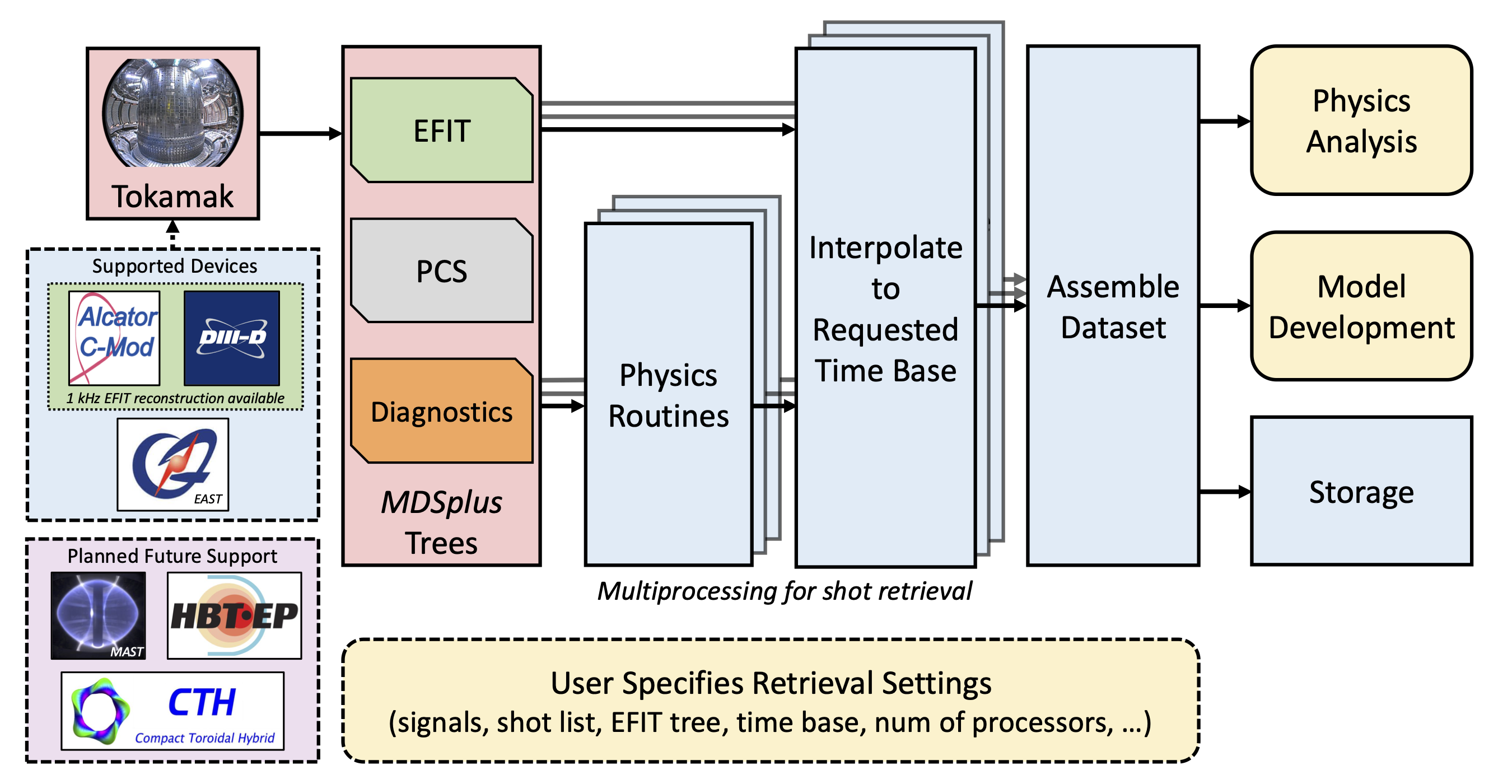Concept
DisruptionPy is an open-source Scientific Python package for fast retrieval of experimental Fusion data from MDSplus servers. The library allows an efficient database preparation for downstream analysis and/or ML model development for disruption studies. Currently supported machines are Alcator C-Mod, DIII-D, and EAST.
- Since APS-DPP 2024, DisruptionPy is open-source on Github.
- The package is available for installation from PyPI.
- A reference page on Zenodo is available for citations with DOI
10.5281/zenodo.13935223.
Background
A key element to ensure steady state operations in magnetically-confined tokamak devices is the prediction and avoidance of disruptions. These are sudden losses of the thermal and magnetic energy stored within the plasma, which can occur when tokamaks operate near stability boundaries or because of hardware anomalies. The energy stored in the plasma and released during disruptions over milliseconds can cause severe damage to plasma-facing components, limiting experimental operations and the device’s lifespan [1]. Disruptions still pose a serious challenge to next-generation fusion devices such as ITER or SPARC, which will have to operate near some of the limits of plasma stability to achieve intended performance and will do so at for long and frequent intervals. Fusion science currently lacks first-principle, theoretical solutions to fully predict and avoid disruptions. However, previous work [2, 3] has shown the usefulness of machine-learning (ML) algorithms for disruption prevention for both DIII-D and EAST operations. DisruptionPy provides a standardized analysis pipeline across different fusion devices to build ML-ready datasets.
Workflow
DisruptionPy makes it easy to retrieve experimental data from MDSplus fusion repositories efficiently. Users can create their own routines and/or use built-in ones that retrieve and derive a variety of important signals from experimental data for disruption analysis. These routines are then interpolated on a requested timebase across the specified set of plasma discharges (or shots) to assemble a dataset and save it under a variety of available formats.
